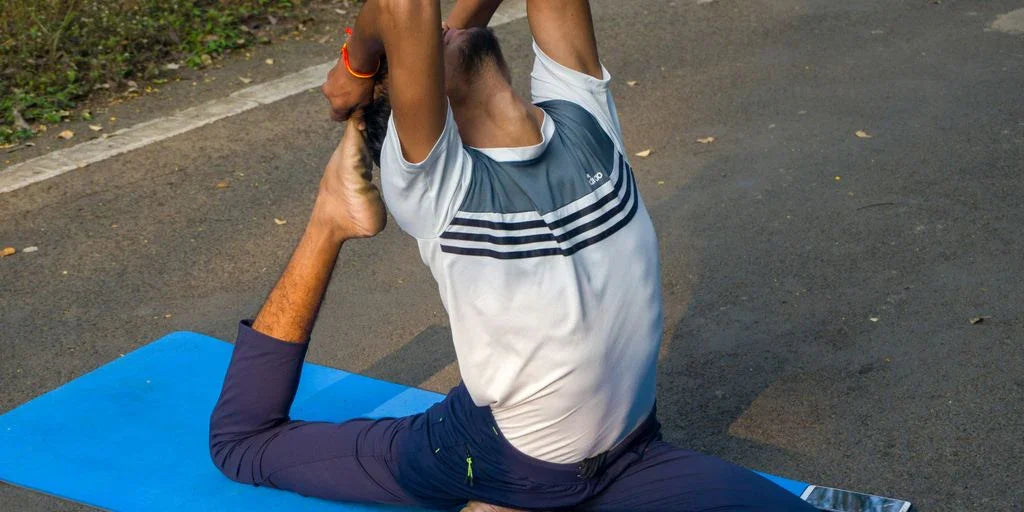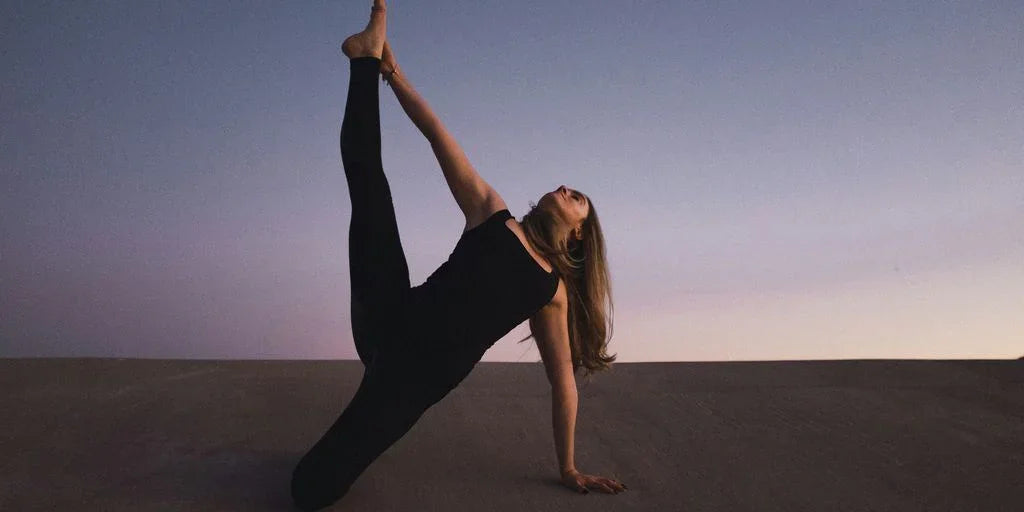
Mastering Posture in Yoga: A Guide to Alignment and Strength
Getting your posture right in yoga is a big deal. It's not just about looking good in a pose; it helps you get the most out of each movement and keeps you from getting hurt. This guide will walk you through simple ways to improve your posture in yoga, making your practice feel better and stronger. We'll cover everything from basic tips to specific poses, all to help you feel more balanced and connected on your mat. Mastering your posture in yoga really makes a difference.
Key Takeaways
- Good body placement is important for getting the most from yoga poses.
- Using your core muscles helps you stay steady and balanced.
- Props can give you support and help you get into the right position.
- Being aware of your movements helps you connect with your body.
- Checking in with yourself regularly lets you change your practice as needed.
Understanding Posture In Yoga
The Importance Of Alignment
Alright, let's talk about why alignment in yoga is such a big deal. It's not just about nailing that perfect Instagram-worthy pose (though, hey, that's a nice bonus!). It's really about preventing injuries and maximizing the benefits of each asana. Think of it like this: if you're building a house, and the foundation is crooked, the whole thing is going to be off, right? Yoga is the same way. Proper alignment helps distribute your weight evenly, which prevents strain on your joints and muscles.
- Reduces the chance of getting hurt
- Improves your balance
- Makes poses more effective
When you're aligned correctly, you're able to breathe more freely, move more efficiently, and feel more connected to your body. It's a game changer.
Breath And Posture Connection
Ever notice how your posture changes when you're stressed or anxious? You probably hunch over, right? Well, the same thing happens in yoga. Your breath and your posture are totally linked. When you breathe deeply and fully, it naturally helps you to lengthen your spine and open your chest. And when you're in a good posture, it's easier to breathe deeply. It's like a positive feedback loop. Try it now: sit up straight and take a deep breath. Feels good, doesn't it?
Common Posture Mistakes
We all make mistakes, especially when we're learning something new. And yoga is no exception. Here are some common posture pitfalls I see all the time:
- Rounding the back in forward folds.
- Locking the knees in standing poses.
- Hunching the shoulders up towards the ears.
It's important to be aware of these tendencies so you can correct them. Don't beat yourself up about it, just gently guide yourself back into alignment. And remember, it's a practice, not a performance!
Essential Techniques For Improving Posture
Engaging Your Core
Okay, so you want to improve your posture? It all kicks off with your core. I know, everyone repeats that, but it's the truth! A solid core acts like the base of a building; if it's shaky, everything above will eventually fall apart. Think of your core as more than just your abs – it's all the muscles around your midsection, front, back, and sides.
- Try exercises like planks, side planks, and even just consciously drawing your belly button towards your spine throughout the day.
- Pilates is also great for core strengthening.
- Don't forget your back muscles! They're just as important for balance.
Seriously, engaging your core isn't about sucking in your stomach to look thinner. It's about creating a stable base that supports your spine and allows you to move with more control and ease. It's a game changer for posture, trust me.
Mindfulness In Movement
Yoga isn't just about nailing the perfect pose; it's about the journey. Pay attention to how your body feels as you move. Are you holding tension anywhere? Are you breathing deeply? Mindfulness in movement means being present in your body and adjusting your practice as needed. It's about listening to your body, not pushing it past its limits. This is where you can really start to build body awareness.
- Start by focusing on your breath. Notice how it feels as it enters and leaves your body.
- Scan your body for tension. Where are you holding it? Can you release it?
- Move slowly and deliberately. Avoid rushing through the poses.
Using Props For Support
Yoga props aren't just for beginners or people who aren't flexible. They're tools that can help you get deeper into poses, maintain proper alignment, and avoid injury. Blocks, straps, and bolsters can make a huge difference. For example, if you're having trouble reaching the floor in a forward fold, use a block under your hands. This will allow you to maintain a straight spine and avoid rounding your back. Using props for support can be a game-changer.
- Blocks can help you reach the floor in forward folds.
- Straps can help you bind your hands in poses like cow face pose.
- Bolsters can provide support in restorative poses.
Key Standing Poses To Enhance Posture
Standing poses are super important in yoga because they help build strength, balance, and overall body awareness. They're not always easy, but with practice, they can really make a difference in your posture and how you feel. I remember when I first started, I could barely hold some of these poses for more than a few seconds! But stick with it, it gets better.
Mountain Pose: Building Stability
Mountain Pose, or Tadasana, is where it all starts. It might look like you're just standing there, but it's actually a very active pose. You're engaging your muscles, aligning your spine, and grounding yourself. Think of it as the foundation for all other standing poses. I like to close my eyes sometimes and just feel my connection to the earth. It's surprisingly calming.
To do it right:
- Stand with your feet hip-width apart, or together if that feels better.
- Engage your thighs and lift your kneecaps.
- Draw your tailbone down and lift your chest.
- Relax your shoulders and let your arms hang naturally at your sides.
- Imagine a string pulling you up from the crown of your head.
Warrior II: Cultivating Strength
Warrior II, or Virabhadrasana II, is a powerful pose that builds strength in your legs, opens your hips, and improves your focus. It's one of those poses that makes you feel strong and grounded. Plus, it's a great way to improve your balance.
Here's how to get into it:
- Start in Mountain Pose.
- Step your feet wide apart, about 4 feet.
- Turn your right foot out 90 degrees and your left foot in slightly.
- Bend your right knee over your right ankle, keeping your knee in line with your ankle.
- Extend your arms out to the sides, parallel to the floor.
- Gaze over your right hand.
Warrior II is not just about physical strength; it's also about mental focus and determination. It teaches you to stand tall and face challenges with courage. I always feel energized after doing a few rounds of warrior poses.
Triangle Pose: Lengthening The Spine
Triangle Pose, or Trikonasana, is a great pose for lengthening your spine, stretching your hamstrings, and opening your chest. It can be a little challenging at first, especially if you have tight hamstrings, but it's worth it. It really helps to improve your posture and flexibility. I find that using a block under my hand helps me maintain good alignment.
To do it:
- Start in Mountain Pose.
- Step your feet wide apart, about 4 feet.
- Turn your right foot out 90 degrees and your left foot in slightly.
- Reach your right arm forward and then down towards your right shin, ankle, or the floor.
- Extend your left arm up towards the ceiling, keeping your chest open.
- Gaze up towards your left hand.
Remember to breathe deeply in each of these poses and listen to your body. Don't push yourself too hard, especially when you're just starting out. Yoga is a journey, not a race!
Seated And Reclined Poses For Alignment
Seated and reclined yoga poses are super helpful for improving your posture because they let you focus on your spine and core without having to balance as much. It's a great way to really feel what's going on in your body and make small adjustments that can have a big impact. Plus, they're often really relaxing, which is always a bonus!
Dandasana: Foundation For Seated Poses
Dandasana, or Staff Pose, is like the Tadasana (Mountain Pose) of seated postures. It's all about creating a strong, straight line from the base of your spine to the crown of your head. It might seem simple, but it requires active engagement of your core and leg muscles. Think of it as the foundation for all other seated poses. If you can master Dandasana, you'll find it much easier to maintain good posture in other seated positions. To get the most out of it:
- Sit on the floor with your legs extended straight out in front of you.
- Press your palms into the floor beside your hips, lengthening your spine upwards.
- Engage your core and draw your shoulders back and down.
Child's Pose: Releasing Spinal Tension
Child's Pose is a fantastic way to release tension in your spine and hips. It's a gentle, restorative pose that can help you reconnect with your breath and calm your mind. It's also a great way to counter the effects of sitting for long periods. I find it especially helpful after a long day at my desk. You can modify it to suit your needs by widening your knees or placing a blanket under your forehead for added comfort. It's a great pose for spinal health.
Savasana: Integrating Postural Awareness
Savasana, or Corpse Pose, is often the final pose in a yoga practice, but it's so much more than just lying down. It's a time to integrate all the work you've done during your practice and to cultivate a deeper sense of body awareness. It's also a great opportunity to notice any lingering tension in your body and to consciously release it. It's about letting go and allowing your body to fully relax. It's a great way to improve your postural awareness.
Savasana is not just about physical relaxation; it's about mental and emotional release as well. It's a time to let go of any thoughts or worries that are weighing you down and to simply be present in your body. It's a powerful tool for cultivating mindfulness and reducing stress.
Tips For Maintaining Good Posture Throughout Practice
Regular Self-Assessment
So, you've been putting in the work to improve your posture during yoga sessions. Awesome! But how can you really tell if you're making progress? That's where regular self-assessment comes in. Taking a few moments before or after each session to check in with your body can make a big difference. Stand in front of a mirror and pay attention to your alignment. Are your shoulders rounded? Is your head poking forward? What about your hips – are they tucked or tilted?
Here are some things you can do:
- Use a mirror to check your alignment in different poses. It's surprising what you can catch!
- Record yourself practicing. This can help you spot any habitual misalignments you might not notice otherwise.
- Ask a friend or teacher to observe your posture and give you feedback. A fresh pair of eyes can be super helpful.
Adjusting Your Practice As Needed
Yoga isn't a one-size-fits-all deal. Some days you might feel super flexible, and other days, not so much. It's important to adjust your practice based on how your body feels. If a pose is causing pain, ease up! There's no shame in modifying or skipping a pose. Using props for support can be a game-changer. Blocks, straps, and bolsters are your friends. They can help you achieve proper alignment without straining. Listen to your body and be kind to yourself.
Listening To Your Body
This might sound obvious, but it's so important: listen to your body! It's easy to get caught up in trying to achieve a perfect pose, but pushing yourself too hard can lead to injury. Pay attention to any sensations you're feeling, and don't ignore pain. If something doesn't feel right, back off or modify the pose. Remember, yoga is about connecting with your body, not punishing it.
It's all about finding that sweet spot where you're challenging yourself without overdoing it. It takes time and practice to develop this awareness, so be patient with yourself. The goal is to feel good, both during and after your practice.
Integrating Posture In Yoga Into Daily Life
It's easy to think of yoga as something that only happens on your mat, but the principles you learn can totally transform how you move and hold yourself throughout the day. It's about taking that awareness and mindful yoga off the mat and into your everyday life.
Applying Principles Off The Mat
Think about the alignment you work on in class. Can you apply that to how you stand in line at the grocery store? Or how you walk down the street? It's about making small, conscious adjustments to your posture throughout the day. For example:
- Engage your core slightly to support your spine.
- Keep your shoulders relaxed and down, not hunched up by your ears.
- Imagine a string pulling you up from the crown of your head, lengthening your spine.
Desk Posture Awareness
If you're like me, you probably spend a good chunk of your day sitting at a desk. And let's be honest, desk posture can be a real killer for your back and neck. Here are some things I try to keep in mind:
- Make sure your chair is adjusted so your feet are flat on the floor and your knees are at a 90-degree angle.
- Position your monitor so the top of the screen is at or slightly below eye level. This helps prevent neck strain.
- Take frequent breaks to stand up, stretch, and walk around. Even a few minutes can make a big difference.
I've found that setting a timer to remind myself to check my posture every 30 minutes is super helpful. It's easy to get caught up in work and forget all about it!
Mindful Movement In Everyday Activities
It's not just about sitting and standing; it's about how you move in general. Pay attention to how you lift things, how you reach for things, and how you carry things.
- When lifting, bend your knees and keep your back straight.
- Avoid twisting your body while lifting.
- Distribute weight evenly when carrying bags or groceries. Maybe even consider body awareness to help you with this.
By being mindful of your movements, you can prevent injuries and improve your overall posture. It's all about making small changes that add up over time.
Wrapping Up Your Yoga Journey
So, there you have it! Mastering your posture in yoga isn’t just about looking good in a pose; it’s about feeling good too. Remember, it’s all about practice and patience. Don’t stress if you don’t get it right away. Everyone’s journey is different, and that’s totally okay. Keep working on your alignment, listen to your body, and enjoy the process. Whether you’re just starting out or looking to refine your skills, these techniques will help you build a solid foundation. So roll out your mat, take a deep breath, and embrace the journey ahead!
Frequently Asked Questions
What's the main point of doing yoga poses?
Yoga poses help you get better at balancing, make you stronger, and become more flexible. They also help you relax and be more aware of your body and mind.
How can I make my posture better in yoga?
To get better at your yoga posture, try to use your belly muscles, use blocks or straps if they help, and really pay attention to how your body moves during your practice.
What are some common mistakes new people make in yoga?
Lots of new yoga students make common mistakes like not lining up their body parts correctly, holding their breath, or trying to push themselves too hard into a pose.
How does breathing affect my yoga practice?
How you breathe really changes your yoga practice. Good breathing helps you stay focused and calm, which makes it easier to hold poses and feel what your body is doing.
What are some good yoga poses for beginners?
Some easy yoga poses for beginners are Mountain Pose, which helps you stand tall, and Child's Pose, which is great for resting and stretching your back.
Can yoga help my posture outside of class?
Yes, yoga can definitely help with everyday posture! By learning how to stand and sit better in yoga, you can start to carry yourself with better posture all the time, even when you're not on your mat.


